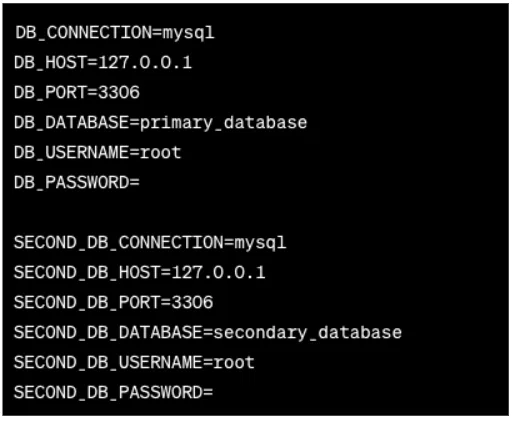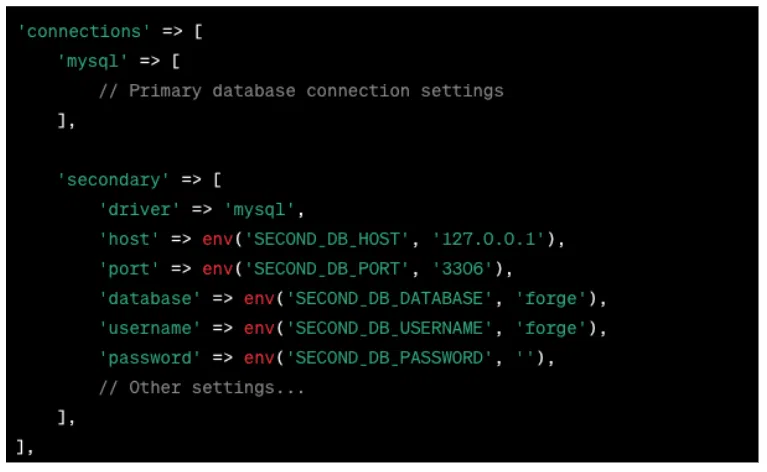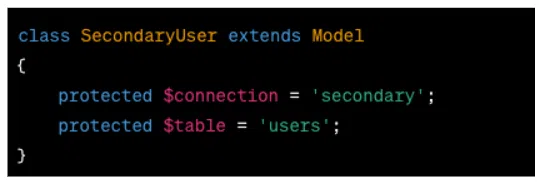Laravel is a modern PHP framework that provides robust tools and a simple syntax structure for web application development. One of its many features is the ability to work seamlessly with multiple databases, which can be crucial for applications that require data segregation, legacy system integration, or performance optimization.
Environment Configuration
The first step is to define your database connections in your .env file. You can set up as many connections as you need by following the pattern used for your default connection. Here’s an example for setting up a secondary MySQL database:

Database Configuration
After setting up your .env file, you need to configure the connections in config/database.php. Laravel’s database configuration file is very intuitive. Here’s how you can define a new connection:

Migration and Model Configuration
When creating migrations, you can specify which database connection to use. Here’s an example of creating a migration for the secondary database:
PHP artisan make:migration create_users_table –database=secondary
For models, you can define the connection they should use by setting the $connection property:

Using Multiple Databases in Routes or Controllers
Within your application logic, you can specify which connection to use for queries. Here’s an example of querying from the secondary connection in a controller method:

Eloquent Relationships Across Databases
Laravel doesn’t support foreign key constraints across different databases out of the box. However, you can still define Eloquent relationships. The key is to manually handle the integrity and joins in your queries.
Advanced: Transactions Across Multiple Databases
Handling transactions across multiple databases is complex and requires careful management. You can manually begin a transaction on each connection and commit or roll them back as needed:

Caching and Performance Considerations
When using multiple databases, you should be aware of the potential performance hits. Make use of Laravel’s cache system to minimize the overhead, and always profile your queries and cache usage.
Testing and Troubleshooting
Testing your application when using multiple databases can be done using Laravel’s built-in testing features. Be sure to test each connection independently and together. Look out for common issues like misconfigured connections or database-specific syntax problems in queries.
Conclusion
Using multiple databases in Laravel allows for flexible data management and scalability. By carefully setting up and managing your connections, you can build a robust application capable of interacting with various data sources efficiently.
References and Further Reading
For more information and best practices, refer to the official Laravel documentation, particularly the sections on database configuration and migrations. Laravel’s community forums and Stack Overflow are also excellent resources for real-world problems and solutions related to multiple database usage.
Article written by Alexandra Oprea, Software Developer @ Control F5 Software
We have helped 20+ companies in industries like Finance, Transportation, Health, Tourism, Events, Education, Sports.












